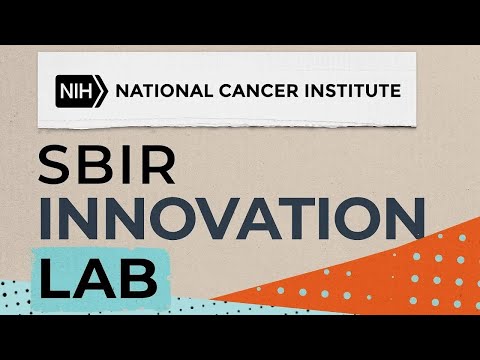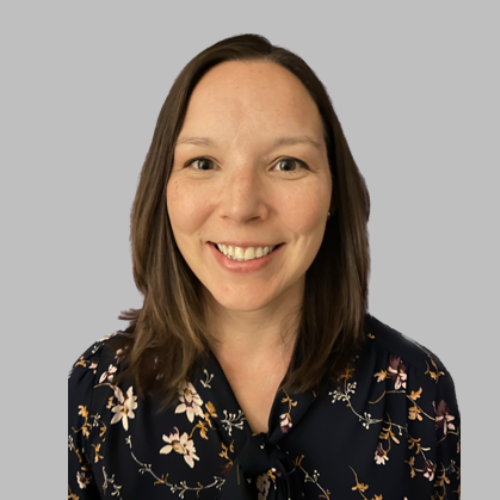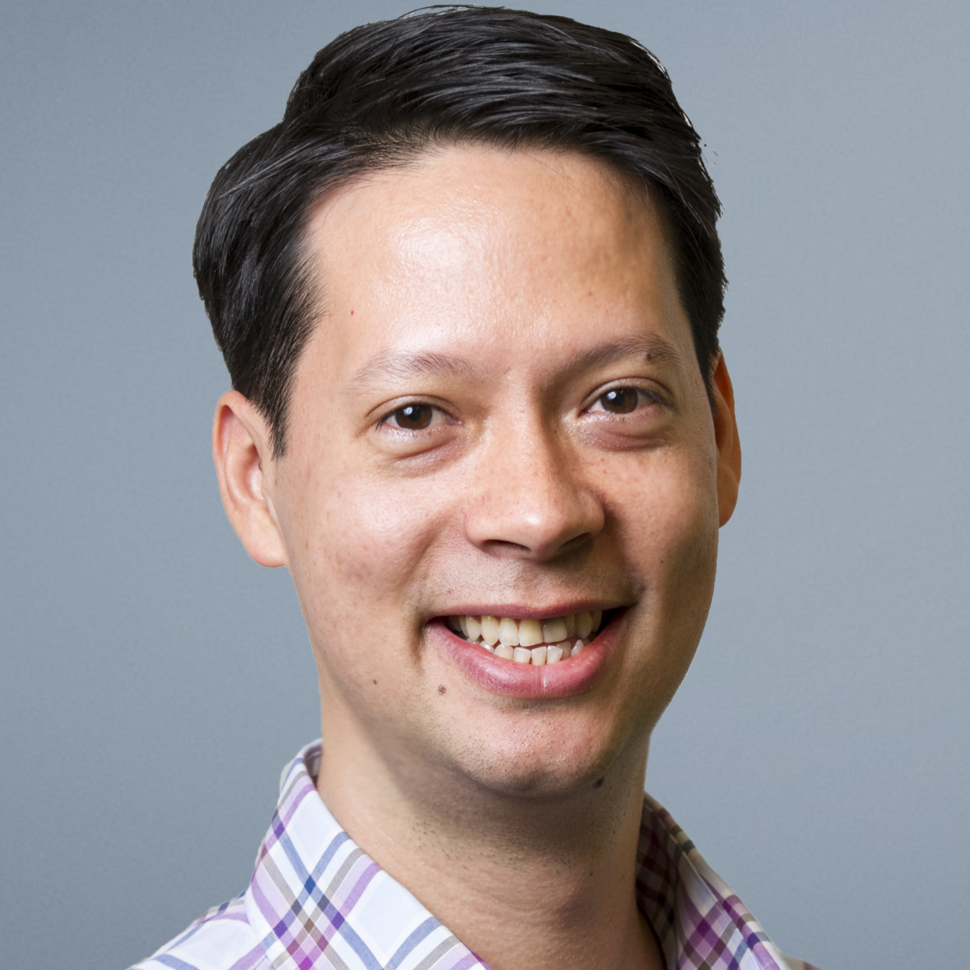Listen
Listen on the YouTube channel.
Episode Guests
Monique Pond, Ph.D.
Monique Pond, Ph.D., is a Team Leader and Program Director at the Small Business Innovation Research (SBIR) Development Center at the National Cancer Institute (NCI). She manages a portfolio of grants and contracts to small businesses developing novel cancer therapeutics, digital health technologies, and therapeutic devices.
Dr. Pond leads the Connecting Awardees with Regulatory Experts (CARE) program and other collaborative initiatives with the U.S. Food and Drug Administration (FDA) to assist small businesses in navigating the regulatory pathway for their technology. She initially joined the NCI SBIR Development Center in 2018 as a Science & Technology Policy Fellow with the American Association for the Advancement of Science.
Jonathan Franca-Koh, Ph.D.
Jonathan Franca-Koh, Ph.D., is a Team Leader and Program Director at the National Cancer Institute's Small Business Innovation Research (SBIR) Development Center. Dr. Franca-Koh manages SBIR & STTR grants and contracts with a focus on cancer therapeutics and novel tools for research and drug discovery. He provides oversight throughout the award period and mentors applicants and awardees in developing their technology goals and commercialization strategy. Additionally, he plays an active role in several center initiatives, including recent investor forums, workshops, targeted funding opportunities, and represents the NCI on the trans-NIH REACH program. Prior to joining the SBIR Development Center, Dr. Franca-Koh was a Program Director at the NCI Division of Cancer Biology and Center for Strategic Scientific Initiatives, overseeing the Physical Sciences-Oncology Centers (PS-OC) program, a network of interdisciplinary centers that brought together physical scientists and cancer biologists.
Articles referenced in this episode
- Program Director Team Contact Information
- SF424 SBIR/STTR Application Guide
- PLAN series: first steps to a business
- PLAN series: specific aim page
Visit our website, sbir.cancer.gov, for the latest funding opportunities and commercialization resources to support your journey from lab to market.
Episode Transcript
[music intro]
MONIQUE POND: Hello and welcome to Innovation Lab, your go to resource for all things biotech startups, brought to you by the National Cancer Institute’s Small Business Innovation Research, SBIR Development Center.
Our podcast hosts interviews with successful entrepreneurs and provides resources for small businesses looking to take their cutting-edge cancer solutions from lab to market. I’m Monique Pond, a Program Director and Team Leader at NCI SBIR, and I’ll be today’s host.
In this episode, we’re going to discuss the importance of talking to NCI SBIR program director before applying and how you can make the most of your conversations with our staff.
Today, I’ve invited my fellow Program Director and Team Leader at NCI SBIR Development Center Jonathan Franca-Koh. Welcome Johnny!
JONATHAN FRANCA-KOH: Thank you, Monique, looking forward to our conversation today.
MONIQUE POND: Yeah, thanks for joining. So to get us started today, I wanted to talk about, who should be reaching to a program director?
JONATHAN FRANCA-KOH: That’s a question many people have, so I’m glad we’re starting with that. Chances are if you’re listening to this podcast, you probably should get in-touch, but more broadly, we are happy to talk to anyone who is thinking about an SBIR or STTR application, anyone curious about commercializing their technology, whether you’re ready for an application or not, even if that is something you think will be more down the road, a couple of months from now, we’re still happy to talk and give you whatever advice and guidance that we can.
MONIQUE POND: Yeah, I agree. I think you don’t have to have already started your small business to reach out to us, we’re happy to talk to you, if you have an idea about a technology and are curious if it would fit within our mission or potentially, you know, be right for an SBIR-STTR application.
So let’s talk about timing. When should somebody reach out to a program director in our office?
JONATHAN FRANCA-KOH: We’re here to help out at whatever stage you’re at, but my advice is to reach out as early as possible. It’s helpful if you know the application due dates and the timing of the cycle so that you can try and avoid the busiest periods, which are obviously going to be right before the due date.
So if you contact us early, you’ll have more of our attention and we’ll have more time to dedicate to answering your questions.
MONIQUE POND: That’s great advice. I often find that, you know, a month before a due date, you know, I have a lot more availability to meet with people and answer their questions versus the week before a due date.
So what are omnibus applications dates for those who might be new to SBIR?
JONATHAN FRANCA-KOH: Yeah, well, the magic dates are January 5th, April 5th, and September 5th. If those dates happen to fall on a weekend or a public holiday, then it will be the following business day.
MONIQUE POND: Great, thanks Johnny. So Johnny, can you explain to people listening in today how they go about reaching us or talking to us?
JONATHAN FRANCA-KOH: Sure, a great first point will be to look at our website, which has all our contact information. There you can see a list of our program directors in our office and our email addresses. We also have a general office email, which is ncisbir@mail.nih.gov and that goes to a central mailbox which match you with the most appropriate program director and get you started that way.
MONIQUE POND: OK, great. So in that email, what do you recommend people include in there for information to make sure they get matched with an appropriate program director?
JONATHAN FRANCA-KOH: The more information you can give us ahead of time, the better we’ll be able to help you. How I like to go about handling these calls is to request that perspective applicants send a one pager or ideally a specific aims page that you’re thinking about in terms of a project, and that gives us a great starting point to initiate the conversation.
We’re happy to review those aims, I think that’s probably one of the things we do that provides most value to applicants. We will be able to tell you whether or not your ideas are coming across clearly, we can help you adjust and refine those aims so that they’re a close match for the project scope that’s appropriate for phase 1 or phase 2 SBIR.
A common question that we work with applicants is trying to help them figure out what is the best funding mechanism, whether they’re ready or not for some of the larger funding opportunities like a direct phase 2 or fast track application, or whether perhaps in their case a phase 1, which is our introductory grant would be the most appropriate.
MONIQUE POND: And that’s a good point Johnny, that’s a question I hear a lot from people. [brief crosstalk] Are there other resources or instructions that they can talk a look at perhaps or that you recommend before they jump on a call with you?
JONATHAN FRANCA-KOH: We have a lot of general information on our website, which is SBIR.cancer.gov. Another great resource is the Application Instructions, a document called the SF-424, that provides a lot of guidance and detailed help there.
But I think when you’re setting up a conversation with the program director, we’re really there to provide as much as possible answers to your specific, unique questions that are specific to your project. Each project is unique and we’re there to kind of provide you with our expertise and background to help you find the answers you need.
MONIQUE POND: Yep. Navigating the SBIR-STTR application, if you’re new to it, that can be a bit of a learning curve, so definitely reach out and we’re happy to try and help. I’ll add, the SF-424 instructions are helpful for things like, you know, how many pages for each section, what sections are required, and so if you do take a look at that beforehand, you can have those answers to your questions and then we can focus, as Johnny said, maybe more specific questions to your unique project.
So a question I know I get asked a lot and I’m sure you do too, Johnny, what if someone listening in right now has a platform technology or some type of technology that could potentially fit within multiple NIH institutes or center’s mission and they don’t know who to reach out to, whether it be NCI or a different institute or center, what should they do?
JONATHAN FRANCA-KOH: That is another thing that comes up quite frequently. As many applicants know, there is some overlap between the mission focus of the different institutes at the NIH and figuring out which is the best one for you is sometimes not so easy from the outside, so that’s another great topic of conversation with the program director to navigate those nuances and find which institute has the best fit.
Our portfolio at the NCI is pretty broad and spans technologies that are related to, obviously, therapeutics and diagnostics and novel imaging technology, but we also do fund significant projects in development of new research tools that do cut-across different disease areas.
So often, a follow-up question then is, I have a broad platform, but how do I tailor it towards something that the NCI might be interested in? So there my advice is make sure you are addressing a question that is of clear interest and importance to the cancer research community.
Make sure that you’re using appropriate samples, that you have recruited a team with expertise in cancer biology to work on the project, and it’s also a valid strategy to think about how you can secure funding from different ICs. So by focusing on cancer, you may then also have opportunity later on to explore other disease areas and potentially secure funding from other institutes.
MONIQUE POND: That’s a good point. Yes, I know I have several companies in my portfolio that have funding from not just NCI, but as you said, they’ve applied to other institutes for different indications and developed their technology in a way that fits that institute’s mission, and that’s a good thing!
So another topic I’d like to cover today is what if people are listening in and they’ve already applied either to another institute or the National Cancer Institute and they’ve received their Summary Statement, what do you recommend they do next, Johnny?
JONATHAN FRANCA-KOH: Yes, the dreaded Summary Statement. So this will be the feedback you received from reviewers on your application. Ideally, you’ll get a good score, in which case our discussion will probably be very upbeat and happy, and of course we love those conversations.
But in the case where you’re score may not be as compelling as hoped, one of the things we can do is help you to interpret the comments clearly and give advice on how best to go about addressing some of the concerns and critiques that reviewers have raised.
MONIQUE POND: For those interested in learning more, what are a couple of resources you would recommend for them to go to next, Johnny?
JONATHAN FRANCA-KOH: There’s one I’d like to highlight on our website, it’s called the Peer Learning and Networking Webinar Series. And especially for first-time applicants or people who are not as experienced with our program, there’s a great topic on first steps for starting a small business.
Here we have interviews and presentations from four entrepreneurs who tell their story of how they developed and started their own small business to commercialize their technology. It covers topics such as: what are some of the roadblocks they had to overcome, how do you navigate that transition from academia to industry, what are some of the financial tools and entrepreneurial resources you can access to help you on that journey, and how about getting help from universities and other organizations?
And we also have a topic on how to write a good specific aims page. Here we have presentations on how to write one for a therapeutic project, a diagnostic project, digital health project, and also a medical device project, and they go over the basics on how to get your message across clearly and make sure you stand out from the first page of the application.
MONIQUE POND: That’s great. So instead of, you know, just taking kind of a program director’s perspective and points, you can also hear from people who have done it and not just been applicants, but been successfully awarded, so hopefully that’s helpful to people listening in, if you are working on your first award yourself.
Well, Johnny, thanks for your time today and thanks for talking with us and helping our listeners out, if they’re new to SBIR-STTR, figure out how to reach you, how to get started, and hopefully people listening in, we will hear from you soon.
JONATHAN FRANCA-KOH: Thank you, Monique.
[music]
MONIQUE POND: As always, don’t forget to check out our website sbir.cancer.gov for the latest funding opportunities and commercialization resources to support your journey from lab to market.
I’m Monique Pond from NCI SBIR, please join us again for the next installment of NCI SBIR Innovation Lab and subscribe today wherever you listen.
If you have questions about cancer or comments about this podcast, you can email us at nciinfo@nih.gov or call us at 800-422-6237. And please be sure to mention Innovation Lab in your query.
We are a production of the US Department of Health and Human Services, National Institutes of Health, National Cancer Institute. Thanks for listening.
[music]
END OF FILE


